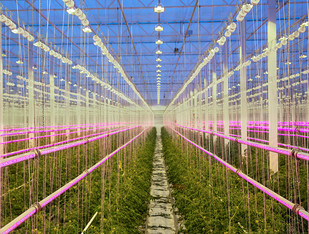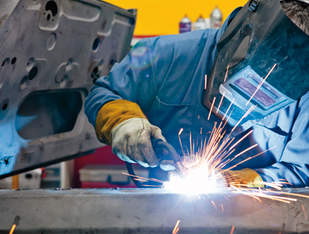- Home
- Home
-
Shop
-
Industries
- Processes
- Gases and Equipment
-
Services
-
Safety
-
Contact & Support
-
News & Media
- Agent Finder
Minimal environmental impact with indoor cultivation and innovative technology: improving productivity with food gases
Just as the tractor once revolutionized agriculture, the next technology shift is coming – indoor cultivation. With indoor cultivation (hydroponic cultivation) it is possible to grow crops anywhere and at any time, such as close to the consumer and even in winter. The result: fewer transports and fresher vegetables to the customer – all year round. In addition, the environmental impact of the process is low and the flavor is even better.
Facts about usage areas for Carbon dioxide
In many Linde applications, carbon dioxide replaces substances which have a negative impact on the environment. Read more about Carbon dioxide.
For example, it replaces halons in fire extinguishers and freons (CFCs) in the production of polystyrene and polyurethane foams. In dry-ice cleaning processes, carbon dioxide works without any further cleaning solvents, which are often harmful or contaminate the surface being cleaned. Automobile air conditioning systems, which use CO2 as refrigerant instead of HFCs, are not only environmentally sound but also more economical (lower petrol consumption) than systems using fluorinated greenhouse gases.
Carbon dioxide has properties that can be used in many different ways without harming the atmospheric cycle. It is therefore not surprising that carbon dioxide is used in products and processes we encounter every day:
- In carbonated drinks: improving their lifetime and adding the fresh and sharp taste
- Cooling or freezing of foodstuffs
- Cleaning of drinking water: making it less corrosive
- In greenhouses: increasing growth rates of vegetables
- Neutralization of wastewater before it is released to the environment
- Carbon dioxide as dry ice pellets is a highly efficient and flexible chilling agent: no additional energy is required for keeping goods cool and fresh
- Shielding gas for welding of steel and in laser cutting processes
- In industrial processes for cooling
How carbon dioxide becomes carbonic acid
Fermentation to produce ethanol releases carbon dioxide. Our main source of carbon dioxide is Lantmännen Agroetanol’s refinery in Norrköping, where approximately 600,000 tons of grain is fermented each year. This also releases carbon dioxide. We collect the carbon dioxide and deliver it to our facility next door, where we convert it to liquid carbon dioxide. Carbon dioxide from nature’s own cycle becomes green CO2.
Carbon dioxide in water is more commonly known as carbonic acid or carbonation. Carbonic acid is a chemical compound that contains carbon dioxide gas. Carbonic acid is formed when carbon dioxide reacts with an aqueous solution. When you make carbonated drinks such as soft drinks, you press carbon dioxide into the aqueous solution under high pressure. The aqueous solution then binds the carbon dioxide which causes the bubbles to remain in the liquid. In short, the gas molecules dissolve and interpose between the water molecules. A very small number of the carbon dioxide molecules also react with a water molecule and become the carbonic bubbles themselves. Imagine that a carbon dioxide molecule (CO2) takes OH from the water molecule (H2O). The second H of the water molecule settles to an O and then a carbonic acid molecule is formed (H2CO3).
Text: Carina Aspenberg








